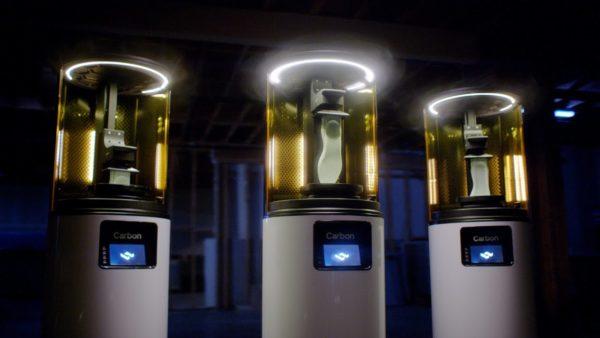BY CHRIS JONES | MAY 26, 2023 | 8 MINUTE READ
This week, as I considered the typical use cases stated for fashion PLM, I realised that Manufacturing on Demand (MOD) has been rising in prominence in fashion, and it would be a good point of discussion.
However, as I was creating the structure of this discussion article, the news of the EU27 agreeing to bring the ban on the destruction of unsold clothing and textiles (and electronic equipment) forward ‘immediately’ (or as quickly as the EU parliament can pass into law) was reported, which has added some ‘spice’ to the discussion.
MOD and its ‘cousin’ Just-In-Time manufacturing (JIT), are standard and long-used techniques in other industries, such as the automotive industry, where JIT was first used in the 1950s by BMC and then by Toyota in the 1970s, which brought terms such as JIT, Kanban, and Kaizen to the public consciousness. JIT aims to reduce timelines, inventory, and manufacturing costs while enabling personalised products to be manufactured on order … and, ideally, only manufacturing products that will be sold. However, it’s noted that the automotive industry has sometimes struggled with this.
Align to the left
Align in the middle
Resize to full width
Align to the right

Image: Veri Ivanova
MOD use cases have been in the fashion industry for some time; in the first instance, to sell more products at full price and with fewer markdowns – while including other benefits. MOD lends itself best to expensive, complex products, for example, cars. This suggests MOD would be better suited to luxury goods within the fashion industry, though examples of best practice case studies in fashion are related to mid-market brands. The game changer is the ban on destroying unsold clothing, which could theoretically be in law for EU-based companies from the end of 2023. As we know, the trigger for this law was the admission from Burberry in 2018 of the destruction of £28M of unsold stock, and since this admission, we have learned of mountains of dumped clothing around the world. However, this law will affect every fashion company above a specific size (exceptions are small companies with less than 50 employees, and medium-sized companies with less than 250 employees will have longer to comply). When it is passed into law, companies such as TJ / TK Maxx could have a more comprehensive selection, or for brands that don’t want to mark down products, they will need to manufacture only the products they can sell.

powered by DALL·E 3
I decided to investigate the case studies for MOD in the fashion industry and align any patterns to PLM.
Speed to market enables a higher proportion of full price sales
Let’s start with the prominent and well-known MOD use case from Zara and other Inditex brands. In this notable example, Zara has developed a vertically integrated near-shore manufacturing model that manufactures greige materials and enables dyeing as close to the market as possible to match consumer demand identified by their advanced analytics capability. This might be described as a hybrid model – the issue of long timelines associated with lowering cost by large volume garment manufacturing is mitigated by the ability to tailor colourways or prints with a significantly shorter timeline to take advantage of market trends and consumer preferences.
Personalisation
The examples of personalisation/configuration models are in two specific ‘flavours’. The first is to allow your customers to ‘tweak’ a base style. Volume requirements can constrain configuration, so the example is for B2B orders rather than consumer orders, and the second example is to curate personalised selections for each consumer from a broader inventory.
Manufacture only what you sell
Unmade is a London start-up that offers a software platform that enables fashion brands to create configured knitwear on demand. Customers can choose from various designs, colours, patterns, and configuration options on the brand’s website or in-store kiosks and order online. The orders are then sent to a network of local factories that use digital knitting machines to produce the garments within a few days.
Ministry of Supply is a Boston-based fashion brand that creates a new category of ‘Workleisure’ performance clothing for professionals and uses an on-demand production model. Using manufacturing partners in Asia, the company claims it only makes what it sells, reducing waste and inventory costs.
Personalised curations
An example of the personalised curation of clothing and accessories is Stitch Fix. The company is an online personal styling service that uses data science and human stylists to curate customised boxes of clothing and accessories for its customers. Customers fill out a style profile, set their budget and preferences, and receive a package of five items at their desired frequency. Customers can keep what they like and return what they don’t while providing feedback to improve future recommendations. Stitch Fix uses algorithms and human judgment to match customers with the best products from its inventory of over 1,000 brands.
Some strategies didn’t go to plan
There is greater control over MOD when the brand owns the factory, and there’s complete control of capacity planning subject to agile merchandise planning requests and customer configuration orders. These factories have been referred to as speed factories or micro-factories, and several case studies had different objectives.
Adidas Speed factories
Adidas opened automated ‘speed factories’ in Ansbach, Germany, and Atlanta, USA, in 2016 and 2017, yet closed these factories in April 2020, opting to reassign their developed 3D printing and automation expertise to suppliers in Asia. Even though the speed factories in Europe and the US were the beginning of a strategy to bring production closer to the consumer and enable more significant configuration, the fiscal advantages of lower-cost manufacturing won out … for now.
The Ansbach speed factory required 160 employees to create 500,000 pairs of shoes per year and automated the entire production process, with final steps of boxing shoes. The process had cut the production process timeline to one day for a pair of shoes instead of the two to three months required when individual parts of the shoes are manufactured at different facilities across Asia.
Align to the lef8
Align in the middle
Resize to full width
Align to the right

Image: Adidas
However, Adidas discovered that costs are more closely related to the number of steps in the manufacturing process rather than the number of people required to make them. Even when automated, 60 to 80 steps are necessary to produce shoes, and too many steps keep production costs high. Additionally, these steps vary according to shoe type. Therefore, due to the complexity of reconfiguring robots and computer vision, production was limited to certain types of running shoes with a knitted upper.
The Adidas strategy of decentralizing production and getting closer to the consumer to enable speed to market and consumer configuration was not the success envisioned. Still, much was learned about 3D printing, robotics, and computer vision, and is being employed in the Asia factories.
Other smaller companies have business models built upon the concept of locally owned factories supporting MOD.
Difficulty changing consumer behaviour
Shoes of Prey launched in 2009 and closed in 2019. It was an online platform that allowed customers to design their shoes, choosing from various styles, materials, colours, and sizes. Shoes of Prey then produced the shoes on demand in its own factory, using 3D printing and automation technologies. However, they found that the business was complex with high fixed costs that required scale to cut costs, which is challenging when manufacturing customised shoes one at a time. Also, manufacturing domestically with stricter environmental, health and safety, and labour regulations produced higher unit costs than comparable products from Asia.
The key learning was the difficulty of changing consumer behaviour and how challenging it is to understand correctly; the mass market customer was consciously telling them what they subconsciously wanted, yet ultimately, the mass market customer didn’t want customisation despite what they were saying. Nevertheless, they were initially successful on a small scale because a small group of consumers does want customisation.
MOD successful at small scale
Reformation is a Los Angeles-based fashion brand focusing on sustainability and social responsibility. Reformation began using a combination of deadstock fabrics, recycled materials, and eco-friendly fibres to create its products, designed and manufactured in its own factory. Reformation also uses an on-demand production model, which only makes what it sells, reducing waste and inventory costs. As Reformation has grown, it has maintained its mission to “bring sustainable fashion to everyone”. It has been certified Carbon-Neutral and Climate-Neutral since 2015 and has expanded manufacturing to China, Turkey, Mexico, Brazil, and India.
Reformation takes the commitment to Sustainability very seriously, but does the MOD model still work when manufacturing in Asia, or do they balance large-scale offshore orders with agile MOD orders from Mexico and their Los Angeles factory?
Conclusion
Except for Zara, it doesn’t appear that MOD on a large scale has been successful … so far. Some of the ‘failures’ are due to factors such as the cost of automating many manufacturing steps or difficulties understanding consumers’ genuine wishes and behaviour. However, some valuable lessons have been learned. MOD, whether supporting sustainable collections or consumer configuration, is successful on a small scale. As part of a sourcing strategy, MOD could be a vital tool to help brands and retailers navigate some of the regulations soon to become law.
How does PLM support Manufacturing on Demand? There are many tools and platforms that support MOD, either manufacturing tools such as digital dyeing/printing technology or configuration collaboration platforms. For MOD to work effectively, there is a heavy reliance on a genuine understanding of customer behaviour and market trends and the ability to respond rapidly with updated merchandise plans and orders using the relevant tools and solutions. However, the foundations for MOD are timely and accurate data shared across all partners, solutions, and tools in the MOD supply chain. Sounds familiar, right?
As with many potential solutions to the challenges for the fashion industry, PLM sits in the centre of a digital value chain, in the optimum location to enable the seamless and timely sharing of data essential to allow MOD to work effectively.
Manufacturing On Demand can be the ‘elastic’ in a brand or retailer’s toolkit to enable compliance with many of the imminent regulations. However, PLM must ‘step up’ to ensure it can seamlessly connect, collect, and share data so it’s a practical and effective tool in a broader sourcing strategy.
Author Chris Jones

Chris has helped global brands, retailers & manufacturers for more than three decades to align people, process & technology, driving transformation projects to provide maximum impact for the business.
This article is also published on;
- WhichPLM

